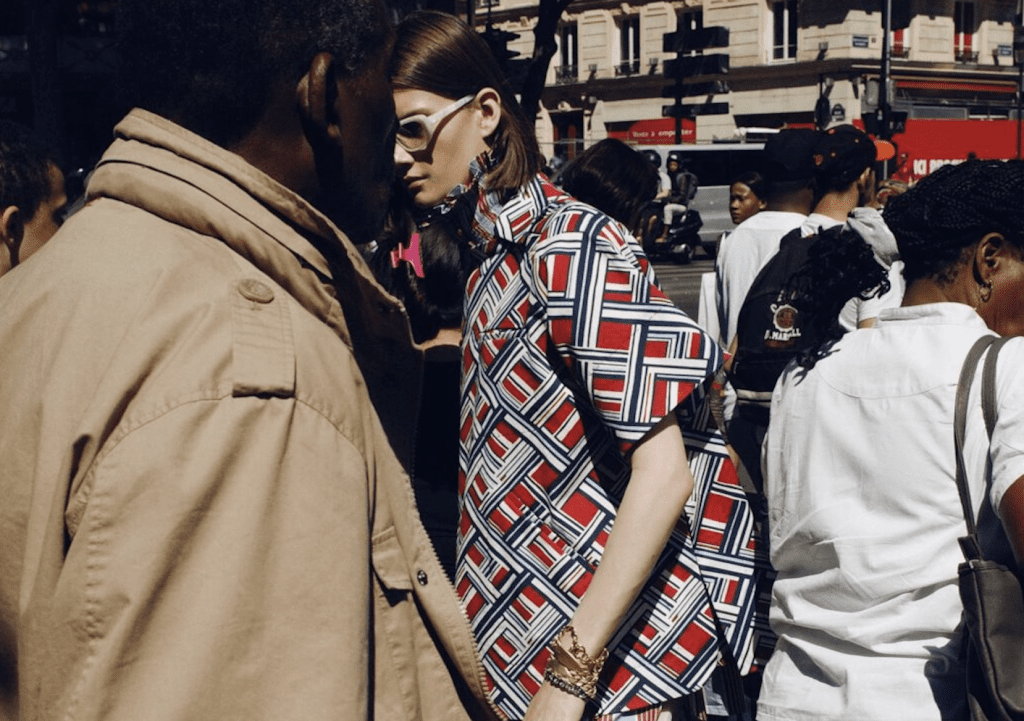Faced with sweeping store closures and drastic declines in consumer spending on non-essential items, apparel retailers are scrambling to stop the financial bleeding, and it is largely taking the form of the cancellation of existing orders with third-party suppliers. Bloomberg reported late last month that European and American buyers, including the likes of apparel giants, such as Primark, have called off roughly $1.5 billion worth of orders they had placed with Bangladesh garment manufacturers prior to the spread of COVID-19.
Retailers and brands are facing issues other than the ones centering on incoming apparel and accessories, though: they have to deal with the products they currently have on hand, either in their stores, which are almost certainly closed due to many states’ “non-essential” business closure mandates, or online (i.e., in storage warehouses), where sales have fallen sharply for fashion-centric goods. And the general consensus thus far is that even if consumers are shopping online to some extent, e-commerce sales are unlikely to make up for the staggering losses produced by temporarily shuttered brick-and-mortar stores as of right now.
“Even if consumers are glued to the latest COVID-19 headlines, and horrors, when they do seek retail therapy by clicking through fashion sites, they’re still browsing more than buying,” WWD stated this week, noting that online fashion, apparel and accessories retailers in the U.S. and key European countries saw March sales fall by more than 30 percent compared to this time last year.
With such drastic drops in foot traffic and sales, alike, the volume of unsold merchandise is piling up, and swiftly inching out of season. “Much of the merchandise that was on the shelves and racks when stores first closed [due to COVID-19 concerns] is worth less than 50 percent of its original value and soon will drop to 10 percent of its original value,” retail expert Walter Loeb wrote for Forbes recently. As stores continue to remain closed (and in certain cities, entirely boarded up to prevent looting), more merchandise will become “obsolete” for an initial point of retail perspective, which raises the question posed by Loeb, what happens to the unsold fashion merchandise sitting in stores and in warehouses across the country?
There is the obvious sale route, of course. As Reuters reported late last month, no shortage of retailers, desperate to remedy their zero-foot-traffic reality, “are dangling site-wide discounts and free shipping to entice people stuck at home to shop.” Nike and Nordstrom are among some of the big names peddling discounts, while “a slew of retailers, including LVMH’s Sephora and Macy’s, are waiving shipping fees, or lowering the minimum amount shoppers must spend in order to qualify for free shipping.”
Meanwhile, Loeb states that nearly “every retailer will be trying to get rid of fashion goods long after the season has moved on,” which means that “companies like JCPenney, Kohl’s and others are likely to re-consolidate the fashion merchandise from their many branch stores and then offer it at low prices to off-price companies like Burlington, TJX, Ross Stores, B.J. Wholesale, Costco, and Sam’s Club who will pack the fashion goods away and offer them next year, at the right moment, to their customers.”
Chances are, while these mass market retailers immediately come to mind in terms of warding off excess inventory, they are not the only ones that will look to bank on alternative purveyors. High fashion and even some luxury names, as well as high-end retailers, have taken to quietly offloading unsold garments and accessories for some time now. In fact, the practice of selling off unsold seasonal merchandise (or even some in-season wares) to retailers, such as T.J. Maxx, Marshalls, and similarly situated companies, including digitally-native resale sites, is a surprisingly common tactic, albeit a largely secretive one, used by both fashion brands and high fashion retailers to pad their bottom lines.
RBC Capital’s Kate Fitzsimons noted this week that the influx of unsold inventory directed towards such retailers will almost certainly be increased even further, “as retail bankruptcies are likely to mount in the coming months.” She predicts that “TJX will likely to be the biggest share beneficiary globally,” while Credit Suisse analyst Michael Binetti suspects that COVID-19 “will create the greatest buying environment for off-price in a decade.”
The supply of wares to third-parties is likely to be bolstered by the fact that high fashion and luxury brands’ traditional reliance on the destruction of at least some of their goods has been widely frowned upon in recent years, and in some cases, such as in France, outlawed.
So, is it safe to say that the likes of T.J. Maxx and The RealReal, are going to be brimming with inventory, including otherwise potential inaccessible high fashion merchandise that brands may have otherwise been unwilling to part with en masse in the past (or may not have needed to part with in the past), will come out on top?
Not quite. While entities like TJX Companies – which owns T.J. Maxx, Marshalls, and Homegoods – and Ross Stores are being touted as potentially able to “fare better than their peers in this time of volatility,” given that their “focus on bargains has helped [them] to stay ahead of traditional retailers,” as brick-and-mortar stores across the country close, most of these off-price chains lack a strong e-commerce presence to fall back on. They have somewhat staunchly opted to focus, instead, on physical retail in light of an industry-wide move online.
As for The RealReal, whose digitally-native consignment-centric business also boasts a sizable stock of new with tags products (seemingly coming from retailers and/or brands), the impact of COVID-19 has been striking. While a representative for the company said that it has seen “a 30 percent increase in supply from brands in the six weeks to April 14, compared with the same period a year earlier, a spokeswoman said,” it is struggling to maintain operations in light of the closing of its main e-commerce center in Brisbane, California.
Despite keeping its e-commerce operations and its fulfillment warehouses in Secaucus and Perth Amboy, in New Jersey up and running, and listing more than 2,000 “New Arrivals” in its e-commerce site, from Prada frocks and Fendi flats to Rolex watches and quilted Chanel purses, shipping delays are being cited as up to 7 weeks. As of last week, The RealReal – whose the NASDAQ-traded company’s stock price has fluctuated rather significantly as of late, dropping to $6.46 on Friday from the $28 per share price it traded at during its “dazzling” initial public offering in June 2019 – cited estimated ship dates of May 15.
Elsewhere in the resale market, sneaker and streetwear-focused site StockX, whose warehouses and verification centers remain open, says that “the average prices of the 500 most popular shoes bought and sold on the platform are slightly down when comparing prices in late March to late February,” though the decline is “relatively small: 4 percent across all sneakers,” Highsnobiety reports.
As of now, Marie Driscoll, managing director of luxury and fashion at Coresight Research, says that consumers are still focusing on buying essentials, “they aren’t tracking down Louis Vuitton wallets.” However, when they do start looking beyond food and other staples, off-price retailers and resellers are likely to be in relatively good positions. After all, as Binetti wrote in a note to clients this week, “Like in the last recession, the consumer will continue value-seeking behavior even as economic conditions improve.”
Goldman Sachs’ Alexandra Walvis echoed this in a note of her own, pointing to “the value positioning of these businesses,” whether that value comes by way of discount yoga pants being offered up by Marshalls or unsold Givenchy trousers that are destined for the racks at T.J. Maxx.
*This article was updated to include a statement from The RealReal regarding an increase in supply from brands.











